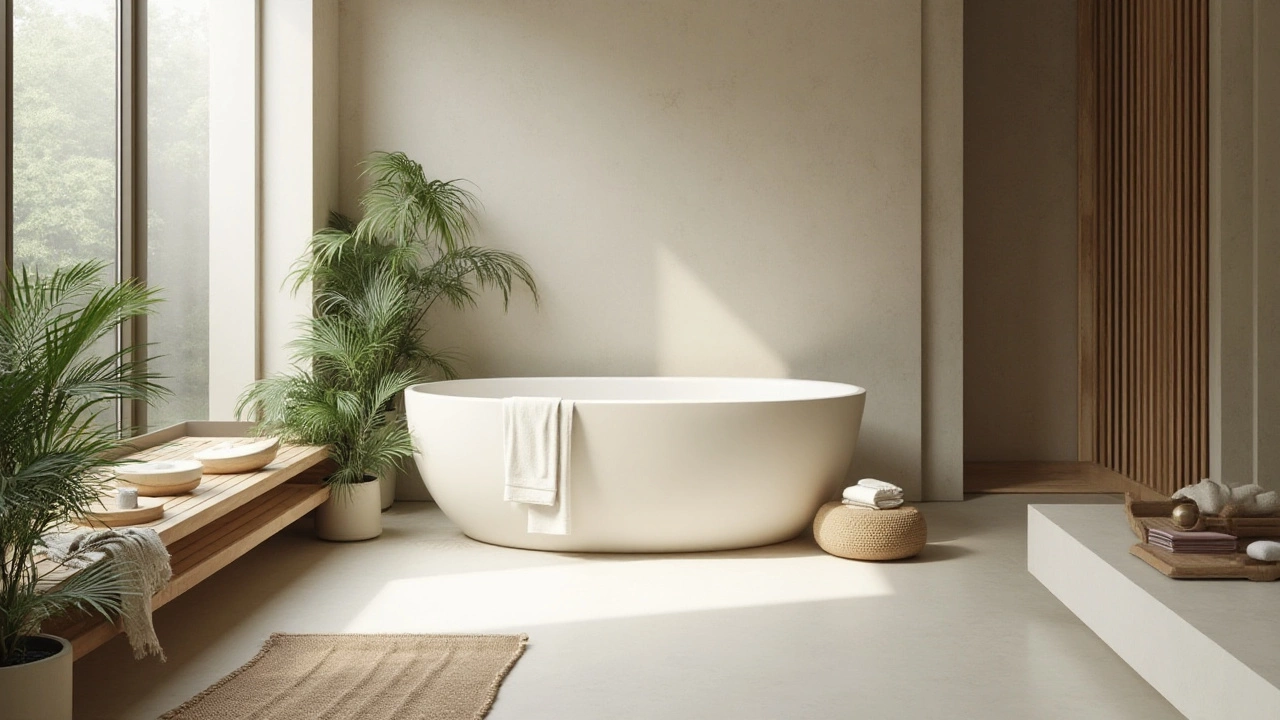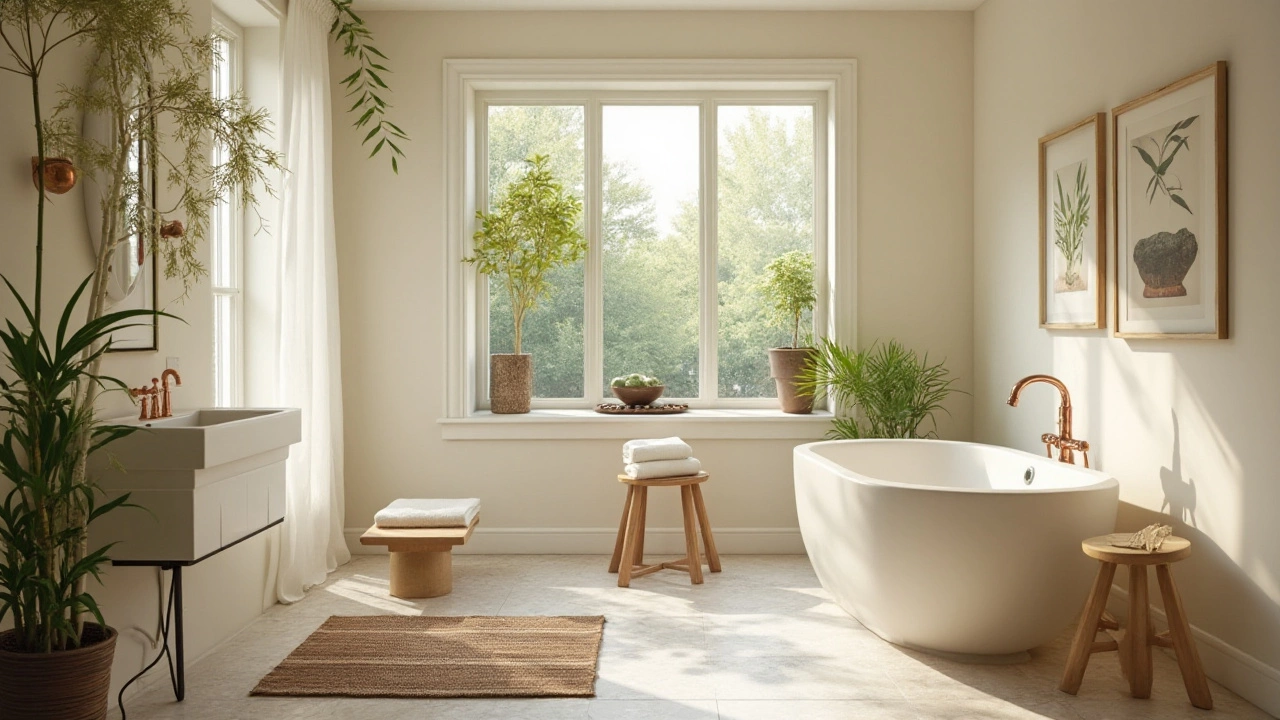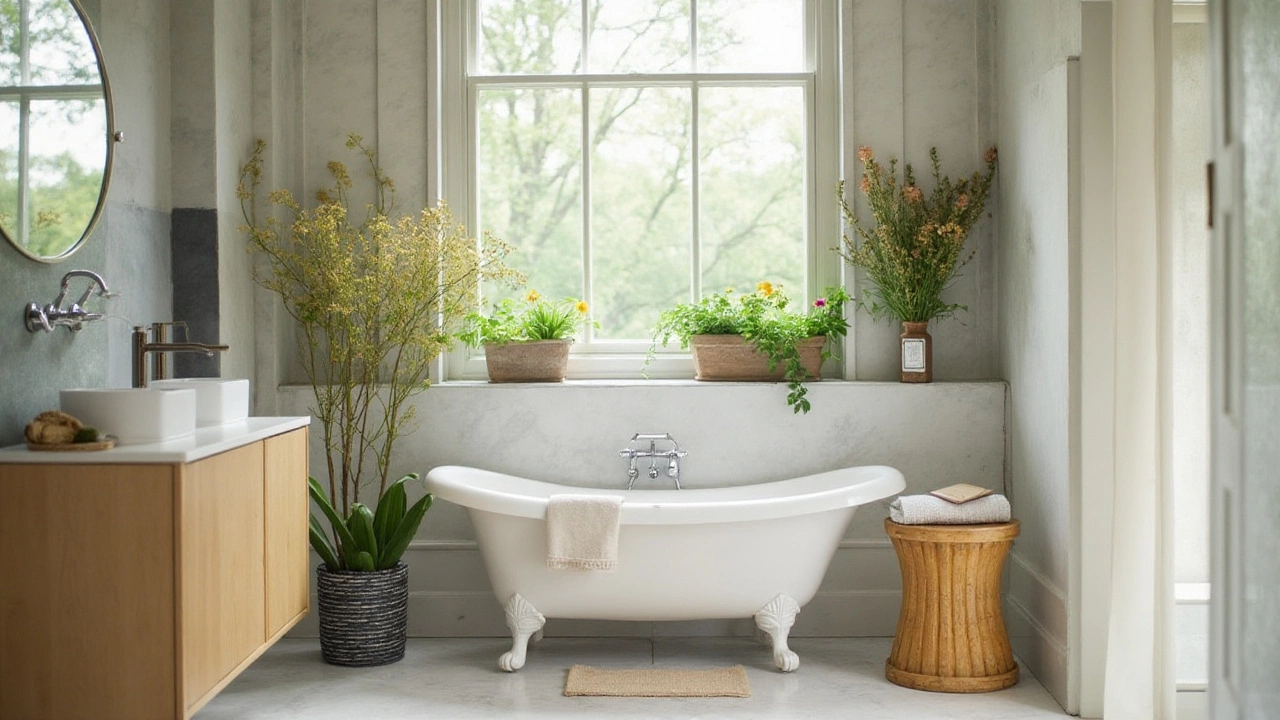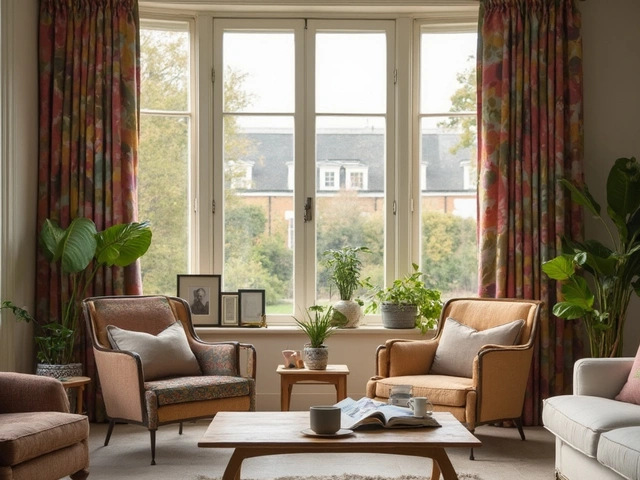Creating a Zen Bathroom Oasis: Essentials and Tips

In our fast-paced world, the bathroom is often the one place where moments of true peace and relaxation are easily achievable. Transforming this space into a Zen sanctuary can bring an element of tranquility to your daily routine, helping you start and end the day with calm and clarity.
The key to a Zen-inspired bathroom lies in simplicity and the effective use of natural elements. Embracing a minimalist design helps eliminate clutter, while incorporating natural materials such as bamboo, stone, or wood brings an organic feel to your space. Subtle touches such as the gentle trickle of a water feature or the soft aroma of essential oils can elevate the sensory experience, creating an immersive escape from the outside world.
Let's delve into the elements that construct a Zen bathroom, offering you insights on creating your own oasis of serenity. From the perfect color palette to the most harmonious accessories, discover how to craft a serene corner that radiates peaceful vibes.
- The Philosophy of Zen
- Simplicity in Design
- Embracing Natural Elements
- Choosing the Right Colors
- Mindful Accessory Selection
- Maintaining the Zen Vibe
The Philosophy of Zen
Understanding the philosophy of Zen is integral to incorporating its principles into your living space, particularly in a bathroom setting, where tranquility is most cherished. At its core, Zen is rooted in Buddhist teachings that prioritize meditation and intuition over doctrine and scripture. The ideology celebrates simplicity and mindfulness, aiming to foster a peaceful state that transcends the boundaries of the physical world. Zen encourages the stripping away of unnecessary elements, allowing space for clarity and calm to flourish. This minimalist approach can transform your bathroom into a haven, offering solace from life's constant demands.
One of the central concepts of Zen is the principle of 'Ma,' which refers to the space between all things. In design, this translates to the thoughtful use of emptiness, creating a balance between objects and allowing the mind to breathe. Calm sanctuary creation involves acknowledging the beauty in simplicity and appreciating the subtle interactions between the elements in the room. This can lead to a deeper sense of relaxation, as the mind is not overwhelmed by stimuli. Achieving a Zen bathroom is not only about the visual aesthetic but also about how the space makes you feel. When you enter this serene retreat, ideally your senses should align to offer peace and introspection.
The Japanese term 'Wabi-sabi' is another element of Zen worthy of consideration in your bathroom oasis. This concept finds beauty in imperfection and the passage of time, which can be reflected in the choice of materials and accessories. For instance, the natural, unrefined textures of stone or bamboo can enhance the room's authenticity, making it more inviting and calming. Incorporating pieces that tell a story or display wear give character to your Zen bathroom. These materials resonate not through flashy brilliance, but through their silent stories and quiet elegance.
To fully grasp Zen, one might draw inspiration from those who have spent a lifetime studying its peaceful ways. A renowned proponent of Zen, Thich Nhat Hanh once said,
"To be beautiful means to be yourself. You don’t need to be accepted by others. You need to accept yourself."This idea correlates directly to the Zen practice in your bathroom. It’s about creating a peaceful ambiance that reflects your true nature, offering restfulness akin to finding tranquility within oneself. This is a space that’s yours—a retreat that, through its design, encourages you to pause, reflect, and appreciate the present moment.
Simplicity in Design
Transforming your bathroom into a peaceful Zen bathroom involves embracing simplicity as the underlying principle. The idea here is to create an environment that allows you to leave the world behind, focusing on the pure, essential, and beautiful. Simplicity doesn't mean sacrificing style; it means finding beauty in the act of stripping away what's unnecessary, to reveal the true essence of your space. This involves mindfulness in selecting each piece, ensuring it serves a purpose while adding to the aesthetic. When planning your Zen bathroom, consider each element carefully. Ask yourself if it promotes relaxation, enhances functionality, and if it aligns with the overall serene vibe. Sparse decoration is key—think of it as creating a blank canvas for peace.
Minimalist design often gets confused with stark or cold atmospheres, but it can be quite warm and inviting when executed well. Colors in a Zen bathroom play a crucial role in design simplicity. Soft, neutral palettes, such as whites, beiges, and light grays, form a base that highlights textures and natural accents. Think about wall paint and tile choices that reflect and amplify natural light, contributing to an open, airy feel. By reducing visual clutter, these colors allow other elements, like wooden bath accents or a plush bathmat, to stand out gently.
The focus on natural materials is another critical aspect of simplicity. Materials like wood and stone not only bring a touch of nature into your bathroom but also provide a tactile experience that's pleasing and calming. Elements made of these materials blend seamlessly into a calm sanctuary, enhancing the space with their earthy appeal. Consider a stone countertop or a wooden bath shelf; the grain and texture provide interest without overwhelming the senses. A famous interior designer once noted,
"Simplicity is not about deprivation. Simplicity is about a greater appreciation for the things that really matter."
Open shelving can reinforce the themes of simplicity and functionality. Displaying curated items such as neatly folded towels or decorative storage jars keeps everything within reach and enhances the aesthetic without creating chaos. The guiding principle here is that every visible item should either serve a functional purpose or contribute to the Zen aesthetic. This not only aids in organization but also emphasizes balance—a core tenet of Zen living. Bathroom accessories should echo this philosophy, offering utility alongside understated elegance.
A meticulously designed Zen bathroom will embrace negative space, which is the empty area in a room. Negative space is just as important as the objects it surrounds, giving the room rhythm and structure. It's tempting to fill every space with décor, but open areas give the eyes a rest and the mind a place to breathe. Consider leaving some parts of counterspace empty or opting for frameless shower enclosures to create uninterrupted lines. Technical elements like storage cabinets should be seamlessly integrated into the design to prevent disruption in visual flow. By mastering simplicity and minimalism, you will craft an inviting space that effortlessly melts away daily stress and ushers in tranquility.

Embracing Natural Elements
Transforming your bathroom into a Zen bathroom involves weaving elements of nature into the very fabric of the space. This isn't merely a trend but a lifestyle choice that returns us to nature’s essence, grounding us in simplicity and harmony. Bringing the outside in can create an atmosphere that not only relaxes the mind but also rejuvenates the spirit. With materials like bamboo, stone, and wood, you can echo the natural world’s soothing qualities right within your home's confines. Think about incorporating live plants. Spider plants, pothos, or peace lilies are resilient and well-suited to bathroom environments. These can purify air quality and add a touch of living artistry to the decor.
The soothing qualities of natural materials like stone can transform a mundane bathroom countertop into a tactile journey, reminiscent of a riverbed's smoothness. Wood, a stunning multi-functional material, contributes warmth and texture that stark ceramics often lack. Wooden shelves or a rustic wooden bathmat can infuse a sense of cohesion. Stone tiles, often associated with earthly strength, provide both durability and a timeless aesthetic. The strategic pairing of these materials creates a seamless flow, a hallmark of authentic Zen bathroom design.
Water and its Calming Effects
The sound of flowing water has been credited with curative effects due to its ability to drown out noises, creating a tranquil bubble of privacy. This is notably achieved through water features like fountains or small waterfalls, enhancing the calm sanctuary mood. Whether it’s the rhythmic trickle in a tabletop fountain or the gentle cascade of water from a wall-mounted fixture, incorporating water as an element can be as immersive as bathing in a natural spring. According to a study published in the Journal of Psychology in 2023, listening to water can reduce stress levels by significantly activating the parasympathetic nervous system, responsible for relaxation and digestion. As the sound envelops you, it transports you to a place of mental clarity and emotional balance.
"Incorporating nature's elements into our interiors is profound, as it returns us to a state of inherent tranquility and balance." – Richard Louv, Author of 'The Nature Principle'
Beyond aesthetics, choosing fixtures and designs that mirror natural forms can be therapeutic. For instance, curvatures in bathroom features can mimic the gentle lines found in nature, such as river stones or a rolling hillside. The interplay of texture and form within these elements promotes a sense of continuity, avoiding the stark rigidity that conventional designs often project.
Textures That Teach
Texture plays a crucial role in achieving a sense of warmth and approachability in a Zen bathroom. Incorporate textures that resonate with your senses—rough, smooth, or fibrous. Consider stone bowls or pebble bath mats beneath your feet, reminiscent of a walk in nature. These become more than just functional items, transforming into sensory experiences themselves. Plants wrapped into rough-hewn baskets or lush green leaves trailing down a smooth ceramic surface can offer an irresistible sensory delight. This interplay of texture fosters a layered look that feels effortless and inviting. Organizing your shelving to feature handmade soaps, textured ceramics, or plush towels folded neatly can also perform double duty as both design elements and practical storage solutions.
Creating this zen-like atmosphere fundamentally changes how you interact with your bathroom, elevating it from a practical space to a peaceful escape. The blend of elements synthesizes nature with design, embodying an ethos of calm that extends beyond bathroom walls. Embrace these natural elements, and watch how they transform your bathroom into an oasis of peace and reflection.
Choosing the Right Colors
The right color palette can transform your bathroom into a Zen bathroom sanctuary where tranquility reigns supreme. When selecting hues for this calming space, opting for nature-inspired tones such as muted greens, soft blues, and earthy browns can cultivate a serene environment reminiscent of a relaxing outdoor retreat. These colors not only evoke the essence of nature but also contribute to a sense of balance and harmony. White and off-whites can serve as a staple backdrop for your walls or tiles, offering the pristine simplicity that harmonizes with more vibrant accents and elements.
Understanding the psychological impact of colors is crucial when crafting a calm sanctuary in your home. For instance, green is known for its soothing characteristics and ability to reduce stress, making it an ideal choice for this purpose. Blue, often associated with the tranquility of water and sky, can instill a sense of calmness and peace. Alternatively, lavender or soft pastels can provide a gentle touch, subtly adding to the peaceful ambiance you wish to achieve. To ensure balance, complement these colors with natural textures and materials to seamlessly blend indoor spaces with outdoor influences. A seasoned interior designer once noted,
"Color harmony can magically shift the mood and function of a space, making it a true haven of relaxation."A blend of both warm and cool tones can add depth and interest while maintaining the calming essence you desire.
It’s not just about painting walls or choosing tiles; the color palette extends to accessories and furnishings as well. Consider incorporating plush towels and mats in shades that echo your chosen scheme. Wooden soap dishes, earthy-colored pot plants, and patterned curtains can subtly echo the natural theme too. Using the right shades for these items contributes to an uncluttered space, reinforcing the Zen principle of simplicity. With an inclination for neutrality, pops of color found in sometimes overlooked aspects like shower curtains or bath mats can introduce a playful yet serene touch without overwhelming the senses. Accents in the form of decorative elements, like ceramic vases or bamboo baskets, can tie the room together beautifully.
For those keen on adding a splash of surprise or variety, consider blending textures with your color choices. A mosaic tile border or a textured wall can offer a dynamic twist. Don’t be afraid to play with different finishes or gloss levels; a satin finish might provide a soft glow, while matte can give a sophisticated, understated look. The balance between matte and gloss can lend your zen-inspired space a subtle dynamism, inviting light to dance gently in the room. Remember, the goal is to create a place where each element serves to enhance your experience of calm and relaxation, sinking into the essence of a true getaway after a busy day.

Mindful Accessory Selection
When envisioning a Zen bathroom, it's essential to approach accessory selection with a mindful eye. Every piece added to the room should contribute to the tranquility and balance of the space, avoiding clutter and chaos. Accessories should not only be aesthetically pleasing but also serve a functional purpose, promoting a sense of calm and order. Think about the impact of each item and how it complements the minimalist design, enhancing the overall ambiance without overpowering it. Practicality and beauty should be in harmony, creating an inviting atmosphere that speaks to the Zen philosophy of serenity and simplicity.
In the pursuit of a peaceful sanctuary, it’s beneficial to start by focusing on the materials that resonate with nature. Incorporate bamboo organizers, wooden trays, or ceramic vases that bring warmth and earthiness to the bathroom. These natural elements help ground the space, anchoring the Zen concept in every corner. When choosing accessories, consider their texture and color, which should contribute positively to the serene setting. Aim to create a variety of textures that stimulate the senses without overwhelming them, using soft cotton towels or a smooth stone soap dish.
Functionality aligns perfectly with Zen principles. A chic soap dispenser, perhaps made of glass or stone, can replace plastic bottles, offering an eco-friendly touch that maintains the calmness of the bathroom ambiance. Double that effect by selecting essential oil diffusers that release calming fragrances such as lavender or eucalyptus, scents known for their soothing effects on the mind and body. Small touches like these can turn regular activities into a meditative experience, transforming the bathroom into a true retreat from daily stresses.
The Power of Organization
Another key element in crafting a peaceful ambiance is organization. A well-ordered space can dramatically enhance the perception of calmness. Utilize open shelving to display beautifully curated essentials while keeping the majority of items neatly tucked away in storage baskets. This method minimizes visual clutter, allowing the eye to rest and appreciate the simplicity of the space. To maintain a Zen-like order, each item should have its designated place, contributing only to the tranquility, not detracting from it.The art of accessory selection requires a thoughtful approach and a clear vision of what a calm sanctuary means to you. As the famous Japanese industrial designer Naoto Fukasawa once said,
"The best design is as little design as possible."This wisdom can be applied to creating a Zen bathroom. Every accessory should serve the dual purpose of utility and beauty, fitting seamlessly into the space without drawing unnecessary attention. Make sure each addition contributes to the overall harmony, enhancing your retreat into a serene atmosphere.
Maintaining the Zen Vibe
Creating a Zen bathroom is only the beginning of your journey toward everyday tranquility. Maintaining this serene space requires ongoing care and mindfulness. Start by establishing a routine for decluttering. A regular tidying schedule ensures that items do not accumulate on countertops and surfaces, which can disrupt the calm atmosphere you’ve worked to establish. Consider limiting the number of products you keep in your bathroom, focusing instead on essentials that serve a purpose and spark joy. This minimalist approach not only refreshes the mind but also leaves your space effortlessly chic.
Regular cleaning is another cornerstone of maintaining a Zen bathroom environment. A consistent cleaning routine prevents grime and buildup, ensuring your space remains fresh. Aim for eco-friendly cleaning products that enhance the natural ambiance without introducing harsh chemicals. Natural solutions such as vinegar, baking soda, and essential oils can be just as effective. They offer the added benefit of lovely, subtle scents that do double duty by enhancing air quality while maintaining cleanliness.
Lighting plays a crucial role in sustaining the peaceful ambiance of your bathroom. Opt for soft, layered lighting that can be adjusted based on your mood or time of day. Warm bulbs paired with natural light offer a balanced glow that complements the organic materials often found in Zen decor. If possible, incorporate candles or a Himalayan salt lamp to provide a gentle, soothing light in the evening. These lighting elements emphasize the tranquility and can transform an ordinary soak into a rejuvenating escape.
Accessories can enhance or overwhelm the senses, which is why thoughtful selection is key. Integrate simple, neutral pieces that meld with your overall theme. Think bamboo bath mats, plush towels in earth tones, or stone soap dishes that echo the natural materials in your design palette. Consider adding an element of nature like a small, low-maintenance plant such as a fern or succulent. This brings a touch of the outdoors into your sanctuary, connecting you with nature.
"Simplicity, patience, compassion. These three are your greatest treasures," reflects Lao Tzu, reminding us of the timeless value of serenity in our environments.
Mindfulness is not just a practice, but a lifestyle, and maintaining a Zen bathroom aligns with this philosophy. Implement small rituals that enhance relaxation, such as taking a few minutes each morning or evening to practice deep breathing exercises. This habit not only centers you but strengthens the peaceful energy of your bathroom. A Zen space should also engage all senses—consider playing soft, ambient sounds or using a diffuser with calming essential oils like lavender or chamomile to round out the experience.
Finally, think about sharing your calm sanctuary with family or guests, allowing them to partake in the serenity. Encourage them to adopt the same mindful habits, ensuring that your haven remains a space for tranquility and reflection. In this way, maintaining a Zen bathroom becomes part of a larger commitment to wellness and peace within your home.





